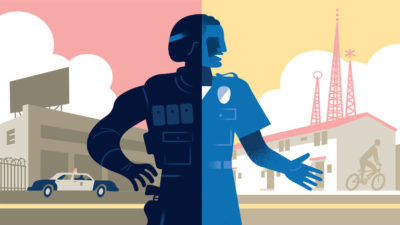How Community Policing Can Work
 Los Angeles — After the recent murders of police officers in Dallas and Baton Rouge, La., and the devastating videos of the shooting deaths of black men like Alton B. Sterling and Philando Castile, the future of police-community relations in cities all over America hangs in the balance. But even as the country is still reeling from these traumas, this is no time for despair.
Los Angeles — After the recent murders of police officers in Dallas and Baton Rouge, La., and the devastating videos of the shooting deaths of black men like Alton B. Sterling and Philando Castile, the future of police-community relations in cities all over America hangs in the balance. But even as the country is still reeling from these traumas, this is no time for despair.
Since the urban unrest of the 1960s, a series of post-riot audits — from the McCone, Kerner and Christopher Commissions to President Obama’s Task Force on 21st-Century Policing (on which one of us serves) — have prescribed the same remedy for police-community conflict: move to guardian policing, overcome bias and replace the “spiral of despair” in poor neighborhoods with opportunity and justice.
We have yet to deliver on many of these — despite the regular reminders we get. Just this week, the report on Baltimore commissioned by the Department of Justice after the 2015 death in police custody of Freddie Gray prescribed a transformation of police culture and practice supervised by the courts, much like the “consent decree” imposed on the Los Angeles Police Department in 2001. At that time, the city faced a total breakdown of public-police trust; since then, we have come a long way, but reform is still a work in progress.
http://www.nytimes.com/2016/08/12/opinion/how-community-policing-can-work.html?emc=edit_th_20160812&nl=todaysheadlines&nlid=60905533

